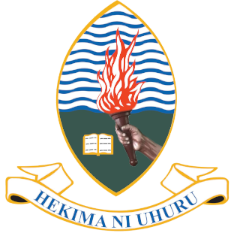
Wireless networks premier
Description
Over the past few years, the wireless industry has undergone tremendous growth and evolution. Wireless networks support several users throughout the world. In developing countries, such as Tanzania, wireless network technologies have significantly impacted the socio-economic welfare of people. In rural areas, for instance, people use mobile networks for electronic financial transactions as well as voice and texting services.
Wireless networks range from Personal Area Networks, Wi-Fi, Mobile Networks, Satellite Networks, and Microwave Networks. Wireless networks find a wide range of applications: radio broadcasting, TV broadcasting, industry, and home automation, telecommunications (telephony and internet access), remote sensing, radar, and sonar and navigation. In recent years, wireless technologies have made their way to the Internet of Things (IoT), where remote IoT devices share massive amounts of data wirelessly. The key advantage of using wireless networks is their scalability. In essence, the cost of service provision using wireless networks is nearly the same order of magnitude in low- and high-density operating environments. Fixed wired networks, such as cable and fiber networks, lack this competitive advantage.
This course equips participants with the basics of wireless networks technologies. Participants will appreciate countless applications of these technologies by learning underlying principles and mechanisms governing their operations.
Objectives
This course introduces wireless networks technologies to help participants understand their differences, strengths and weaknesses, and basic operating principles. Our goal is to allow participants to gain a system perspective of a complex set of wireless technologies. The course gives knowledge on how these technologies can be put together into practical systems to meet real-world requirements for different applications. You will be empowered to deepen your understanding and appreciate design choices and tradeoffs of wireless networks via numerous comparisons, such as capacity, coverage, throughput, QoS, MAC protocols, and Multiple Access Techniques.
Learning outcomes
|
By the end of the course, the participants should have achieved the following: |
|
|
1. |
Describe techniques and technologies behind wireless networks, such as MAC protocols and Multiple Access Techniques, Duplexing, and channelization. |
|
2. |
Understand the main attributes of the major competing wireless technologies |
|
3. |
Interpret radio specifications and compare two radio modules |
|
4. |
Select a suitable radio technology |
|
5. |
Understand requirements to make a product legal for sale (certifications and standards) |
|
6. |
Describe common impairments affecting radio performance and explain mitigations for poor signal quality and reception |
|
7. |
Describe fundamental knowledge of RF engineering, propagation, and antennas |
|
8. |
Describe and list applications of different Wireless Access Networks (Wi-Fi, Mobile Networks, Satellite, Microwave) |
|
9. |
Explain Wireless Network KPIs (Capacity, Range, throughput, and QoS) |
|
10. |
Understand Fixed and Mobile technologies (strengths, weaknesses, and failures) and give reasons behind their adoptions |
|
11. |
Describe best practices and latest developments in the telecoms technology space |
|
12. |
Understand the Tanzania operating environments and implications on choices of Wireless Access Networks |
Topics
- (1) Wireless channel, propagation, and modeling
- (2) RF engineering, antennas
- (3) MAC and Multiple Access Techniques
- (4) Channelization, capacity, coverage, and throughput
- (5) Example Wireless Networks (Wi-Fi, Mobile Networks, Satellite Networks, Microwave Networks)
- (6) Applications and Trade-Offs
Target Group
Network administrators
Course Materials
Each registered participant will receive a copy of instructors’ slides and other materials, such as references, papers, and policy documents used during the course.
Certificate of Attendance
Participants will be awarded certificates of attendance by the University of Dar es Salaam
Fee
(1) TZS …600,000……….. (Tanzanians)
(2) USD …300………. (Foreigners)
Payment
All payments should be made centrally through Control Numbers provided by the University of Dar es Salaam. After registration, a Control Number and invoice will be emailed to you using the information you have provided in the registration system.
